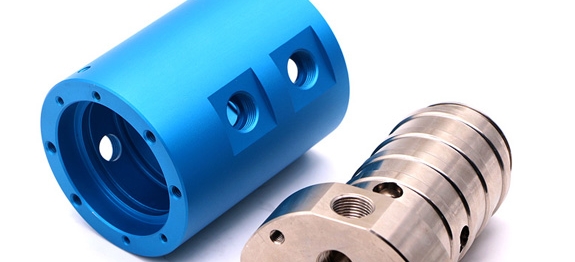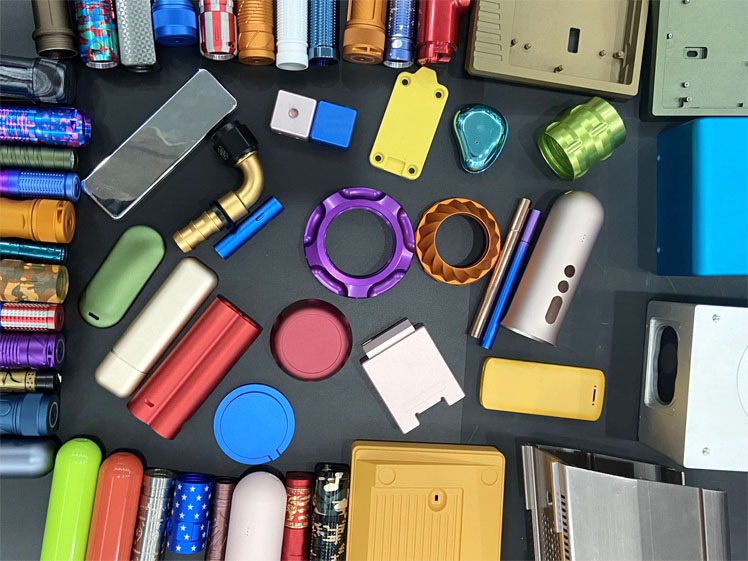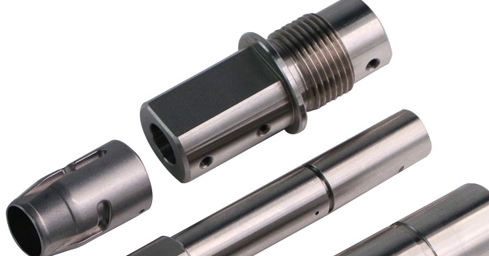Can Stainless Steel be Anodized? | Interpretation Guide
Have you ever wondered if stainless steel can be anodized? If you haven’t explored this yet, you might miss out on an opportunity to enhance your metal’s appearance and durability. Anodizing is a popular metal surface treatment, and this guide will help you understand how it applies to stainless steel.
Stainless steel can be anodized, although it is a more complex process compared to aluminum. This process enhances the metal’s corrosion resistance and visual appeal.
Let’s delve into the anodizing process for stainless steel and discover how it differs from anodizing other metals.
What is Anodizing?
Anodizing is an electrochemical process used to increase the thickness of the natural oxide layer on the surface of metals. This layer provides a highly durable, corrosion-resistant finish that enhances both the appearance and functionality of the material. Originally popularized for aluminum, anodizing can be applied to various metals, including stainless steel. The process creates a hard, wear-resistant surface while offering aesthetic benefits like color enhancements.
Why Anodize Metals?
The primary reasons to anodize metals are to improve surface hardness, increase corrosion resistance, and enhance the appearance. For metals like stainless steel, anodizing also allows for better adhesion of paint and dyes, making the material more versatile for a wide range of applications. Additionally, anodized metals are often used in industries requiring high-performance materials, such as aerospace, automotive, and electronics.
Can Stainless Steel Be Anodized?
The simple answer is yes, stainless steel can be anodized, but the process is more complex than anodizing aluminum. The key challenge lies in creating a thicker and more visible oxide layer. Stainless steel anodizing is often used for specific applications where the appearance and performance of the material need to be enhanced.
The Process of Anodizing Stainless Steel
Anodizing stainless steel involves several steps:
| Step | Process Description |
|---|---|
| Cleaning | The stainless steel surface is cleaned to remove grease, dirt, and any contaminants that could affect the anodizing process. |
| Electrolytic Process | An electric current is passed through the metal while submerged in an acid solution, creating an oxide layer on the surface. |
| Dyeing | If coloring is desired, the anodized metal is dyed to achieve the desired appearance. The dye is absorbed into the porous surface. |
| Sealing | The metal is heated or treated with chemicals to seal the anodized surface, enhancing corrosion resistance and durability. |
What is Anodized Metal?
Anodized metal refers to metal that has been treated with the anodizing process to enhance its surface properties. This treatment thickens the natural oxide layer, which improves the metal’s resistance to corrosion, wear, and weathering. Anodized metals often have a matte finish, but they can also be dyed to achieve different colors. Anodized stainless steel offers these benefits, though the process is more intricate compared to other metals like aluminum.
Why Can’t Stainless Steel Be Easily Anodized Like Aluminum?
Unlike aluminum, which naturally forms a thick, protective oxide layer when exposed to oxygen, stainless steel has a more complex alloy composition. The oxide layer formed on stainless steel is much thinner and more stable, which makes it harder to manipulate during the anodizing process. While aluminum is easily anodized to a thicker, colored layer, stainless steel anodizing requires specialized techniques and equipment.
Best Stainless Steel to Anodize
Certain grades of stainless steel are better suited for anodizing than others. For instance, grades such as 304 and 316 are commonly used in anodizing, but the process may not work as effectively on grades like 400-series stainless steel.
| Grade of Stainless Steel | Suitability for Anodizing | Notes |
|---|---|---|
| 304 | Good | Commonly anodized for aesthetic purposes and enhanced corrosion resistance. |
| 316 | Excellent | Offers superior corrosion resistance due to the presence of molybdenum, making it highly suitable for demanding environments. |
| 400-Series | Poor | Generally unsuitable for anodizing due to lower levels of chromium and nickel, resulting in limited oxide layer formation. |
Are There Any Special Considerations When Anodizing Stainless Steel?
When anodizing stainless steel, it is essential to consider the material’s composition and surface preparation.
1. Material Composition
Certain grades of stainless steel, such as 304 and 316, are more suitable for anodizing due to their higher chromium and nickel content, which contribute to better oxide layer formation. Alloys like the 400-series, with lower chromium or nickel content, may not anodize as effectively and could require additional pre-treatments to achieve desirable results.
2. Surface Preparation
Preparing the surface is a crucial step in the anodizing process. Stainless steel must be meticulously cleaned to remove grease, dirt, or any contaminants that might interfere with the anodizing reaction. This can include processes like chemical cleaning, degreasing, or mechanical polishing to ensure an even, uncontaminated surface.
3. Process Control
Achieving consistent results requires precise control of key anodizing parameters such as voltage, temperature, and electrolyte composition. Variations in these factors can lead to uneven oxide layers or surfaces with diminished durability, making precision in these areas a critical consideration.
4. Oxide Layer Thickness
Unlike aluminum, stainless steel typically forms a thinner and more transparent oxide layer during anodizing. This characteristic necessitates close monitoring to ensure the oxide layer develops to the desired thickness uniformly across the entire surface.
5. Environmental Factors
Anodizing stainless steel involves handling acid solutions and electrical equipment, which necessitates specialized facilities. Adequate ventilation and proper waste management protocols are essential to ensure safety and compliance with environmental regulations during the process.
6. Cost and Feasibility
Compared to aluminum, anodizing stainless steel can be more complex and expensive due to the properties of the material and the specific requirements of the process. It is important to weigh the added cost and complexity against the potential benefits, especially for large-scale or highly decorative applications.
Advantages of Stainless Steel Anodizing
Anodizing stainless steel offers several advantages, including improved corrosion resistance, enhanced wear resistance, and the ability to apply colors for aesthetic purposes.
| Advantage | Description |
|---|---|
| Improved Corrosion Resistance | The anodized layer acts as a protective barrier, reducing the impact of moisture, chemicals, and environmental factors. |
| Enhanced Wear Resistance | The hard oxide layer increases resistance to scratches, abrasion, and mechanical wear, extending the material’s lifespan. |
| Aesthetic Customization | Allows for the application of various colors, providing options for decorative and functional finishes. |
| Increased Durability | The anodized surface withstands harsh environments and frequent handling, making it suitable for demanding applications. |
| Low Maintenance | The protective oxide layer reduces the need for frequent cleaning or upkeep, saving time and resources. |
Common Applications of Anodized Stainless Steel
Anodized stainless steel is used in a variety of industries, including automotive, medical equipment, and architecture. It is often used for parts that require both high performance and an aesthetically pleasing finish.
1. Automotive Industry
Anodized stainless steel finds extensive use in the automotive sector for decorative elements such as trim, grilles, and interior accents. These components benefit from the material’s high-end appearance and excellent resistance to wear and corrosion. Additionally, functional parts like engine covers and fasteners exposed to harsh conditions rely on anodized stainless steel for its durability and long service life.
2. Medical Equipment
The medical industry values anodized stainless steel for its enhanced corrosion resistance and ease of cleaning. This makes it an ideal choice for surgical instruments, diagnostic equipment, and trays. The smooth, sealed surface of anodized stainless steel reduces the risk of contamination, helping to maintain stringent hygiene standards in medical environments.
3. Electronics and Consumer Goods
In the electronics and consumer goods sectors, anodized stainless steel is highly valued for its durability and aesthetic appeal. It is commonly used in electronic casings, laptop enclosures, and smartphone frames. Its resistance to wear ensures a lasting finish, particularly for products that experience frequent handling.
4. Marine and Aerospace Applications
Anodized stainless steel is ideal for marine hardware, fittings, and components due to its ability to resist corrosion in saltwater environments. In aerospace, the material’s lightweight durability and resilience under extreme conditions make it a preferred choice for both structural and decorative parts.
5. Industrial Equipment
Industries requiring robust and professional-grade equipment turn to anodized stainless steel for machinery and tools. Applications include food processing equipment and laboratory tools, where enhanced wear resistance and a polished appearance are essential for functionality and presentation.
Start Your CNC Machining and Anodizing Projects at VMT
At VMT, we specialize in precision CNC machining and anodizing stainless steel, catering to industries like automotive, medical, and electronics. Alongside anodizing, we offer a range of surface treatments, including polishing, electroplating, powder coating, sandblasting, passivation, and laser marking, ensuring your products meet the highest standards of functionality and aesthetics with fast turnaround times.
In Conclusion
Anodizing stainless steel is a viable and effective way to enhance its appearance and performance. Understanding the anodizing process helps you make informed decisions for your projects.
Frequently Asked Questions About Anodize Stainless Steel
How Do You Anodize Stainless Steel?
To anodize stainless steel, the metal is submerged in an electrolyte bath while an electrical current is applied. This creates an oxide layer that is durable and resistant to corrosion. The key challenge with anodizing stainless steel is controlling the thickness and uniformity of the oxide layer, as it doesn’t naturally form a thick layer like aluminum. After anodization, the stainless steel can be dyed to achieve various color finishes.
Can Stainless Steel Be Colored After Anodizing?
Yes, stainless steel can be colored after anodizing, although the process is more difficult than with aluminum. Dyes are applied to the anodized surface, which is porous, and the dye becomes trapped in the oxide layer. The available colors are typically more subdued compared to aluminum anodizing, but a range of shades, from gold to black, can be achieved.
Is Anodized Stainless Steel Environmentally Friendly?
Yes, anodizing stainless steel is an environmentally friendly process. Unlike coatings or paints that can contain harmful chemicals, anodizing does not involve harmful chemicals and produces minimal waste. The anodized layer is stable and does not degrade over time, making it a sustainable option for improving the material’s properties.







